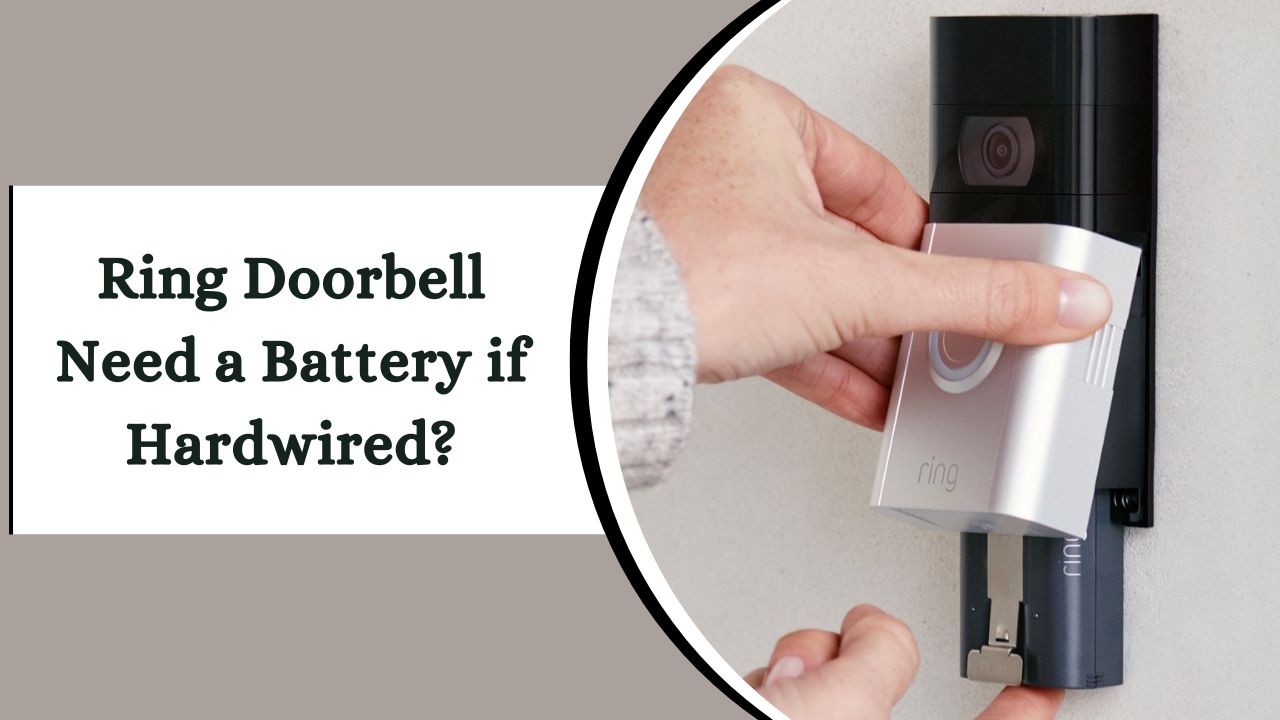Yes, even when hardwired, Ring doorbells require a battery. The battery supports power-hungry features like motion detection and live view, ensuring continuous operation by receiving a charge from the home’s electrical system.
Does a Hardwired Ring Doorbell Still Require a Battery?
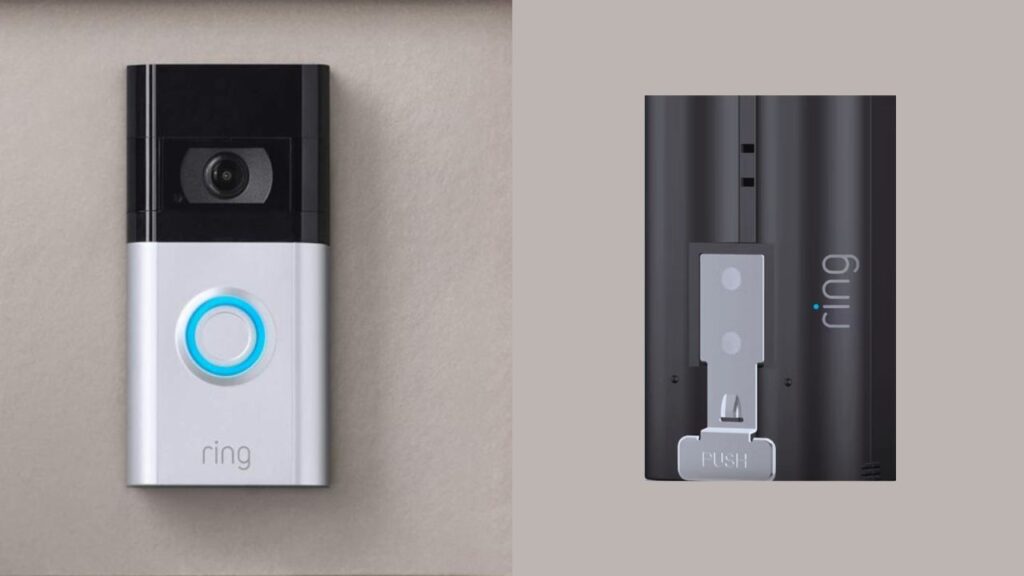
Yes, even when hardwired, the Ring doorbell relies on its battery. Hardwiring connects it to your home’s electrical system via existing doorbell wires and a transformer.
However, features like motion detection and live view, which consume a lot of power, may require more energy than what a typical transformer (usually around 8-24 volts) can supply.
Thus, the battery is used and continuously charged while hardwired, ensuring your Ring doorbell always has the power it needs.
Installation Process for a Hardwired Ring Doorbell

Installing a hardwired Ring doorbell is a straightforward process if you have basic electrical knowledge and the necessary tools. This guide will walk you through the key steps to ensure a smooth installation:
- Turn Off Electricity: For safety, always turn off the electricity in the area where you’re working. This prevents accidental shocks or other hazards.
- Measure and Mark the Mounting Location: Decide where you want to install the doorbell and measure the spot. Mark the location with a pencil to ensure precise placement.
- Prepare the Wall: Depending on the material of your wall, select the appropriate screws and anchors. This ensures the doorbell is securely attached.
- Run the Wires: Connect the wires from your doorbell to the transformer box. The location of the transformer box can vary; it might be inside or outside your home.
- Connect Wires to Terminal: Attach the wire from the doorbell to the terminal on the button switch. This connection is crucial for delivering power to your doorbell.
- Power Supply Specifications: Most Ring doorbells require a step-down DC power supply of 8-24 VAC, 40VA max, 50/60Hz. Ensure your home’s wiring meets these requirements.
- Alternative Power Source: If your existing wiring doesn’t meet the power specifications, consider using a Ring Plug-in Adapter, 2nd Gen, as an alternative power source. This adapter can provide the necessary power without extensive rewiring.
Why Won’t My Ring Doorbell Charge When Hardwired?

If a hardwired Ring doorbell stops charging or doesn’t work properly, several issues might be causing the problem. From my troubleshooting experience, various factors can affect its performance.
Cold weather can drain the battery faster than it can charge. A poor Wi-Fi connection might cause the doorbell to use more power to maintain a connection.
Motion detection settings that are too sensitive can also make the device work overtime, leading to power issues.
Overuse of live view can drain the battery more quickly than the hardwired connection can recharge it. Lastly, defects in the device or installation problems can also cause charging issues.
Understanding Why Your Hardwired Ring Doorbell Isn’t Charging?
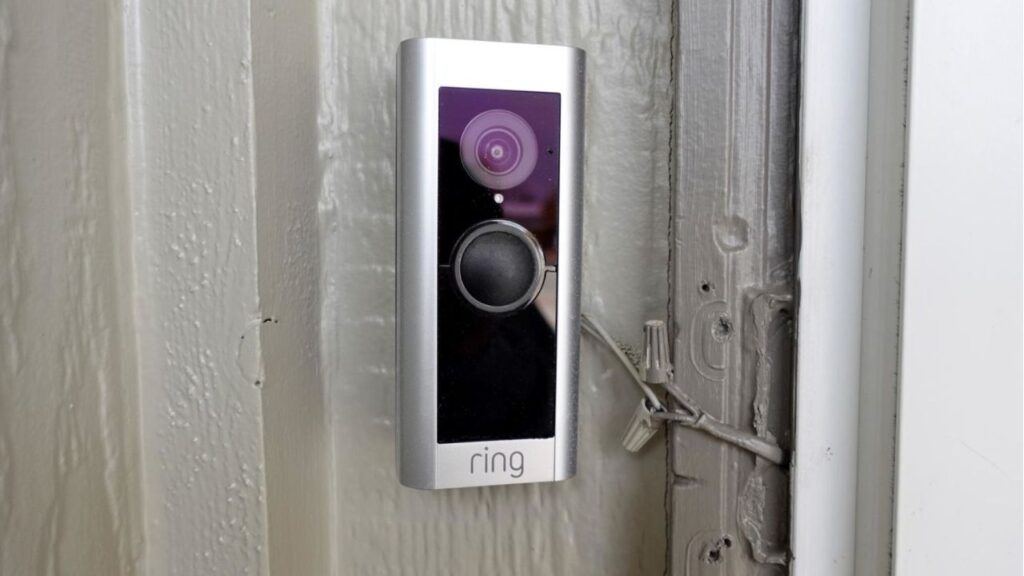
If your hardwired Ring doorbell isn’t charging, several factors could be causing the issue. Here are some common reasons and potential solutions:
1. Cold Weather:
Cold weather can hinder a Ring doorbell’s ability to charge, as these devices have specific operating temperature ranges.
When temperatures drop below 40°F (4.44°C), the lithium polymer batteries in the doorbell may slow down or stop charging. To maintain optimal performance, keep the doorbell in environments at or above this temperature.
2. Poor Wi-Fi Connection:
A weak Wi-Fi connection can cause a hardwired Ring doorbell to have charging issues, as the device uses more power to maintain a connection.
Check the RSSI value in the Ring app; if it’s below -70, the signal is too weak. Improving the Wi-Fi signal, such as by moving the router closer, can help ensure efficient charging and smooth operation.
3. Sensitive Motion Detection Settings:
Highly sensitive motion detection can drain a Ring doorbell’s battery quickly, even with small movements like leaves. To reduce battery drain, adjust the sensitivity settings in the Ring app.
Go to settings, tap on motion settings, and lower the sensitivity or set specific motion zones to help maintain optimal operation and keep the doorbell charged.
4. Overuse of Live View:
Frequent use of the live view feature can contribute to charging issues. While this feature is useful for monitoring your property, it also drains the battery quickly. Even with a hardwired connection, excessive use can prevent the battery from staying fully charged.
To mitigate this, limit live view use or consider installing additional security cameras. This allows you to monitor your property without overburdening the Ring doorbell’s battery.
5. Defective Doorbell:
Issues within the doorbell itself can also cause charging problems. If the device appears dead or the battery seems damaged, inspect the doorbell and wiring for defects.
Regular maintenance and prompt attention to any signs of damage can prevent long-term issues. If necessary, replacing the doorbell may be the best solution.
6. Dead Battery or Defective Device:
The battery should remain charged when a Ring doorbell is hardwired to a transformer. However, if the battery is dead or the doorbell is not working, try using a fully charged spare battery. If the problem continues, the doorbell might be defective, requiring a replacement.
Pros and Cons of Hardwired vs. Battery-Powered Ring Doorbells

When deciding between hardwired and battery-powered Ring doorbells, it’s important to consider the advantages and disadvantages of each option to determine which best suits your needs.
Pros and Cons of Hardwired Ring Doorbells:
Pros:
- Consistent Power Supply: Connected to your home’s electrical circuit, eliminating the need to charge batteries.
- Reliable Performance: Provides consistent operation without battery replacements.
- Low Maintenance: No need to worry about charging or maintaining batteries.
- Enhanced Security: More reliable due to uninterrupted power supply.
Cons:
- Higher Initial Cost: Generally more expensive than battery-powered models.
- Installation Challenges: If your home lacks existing wiring or has outdated wiring, installation can be more complicated and costly.
Pros and Cons of Battery-Powered Ring Doorbells:
Pros:
- Easy Installation: Simple to install as they do not require wiring.
- Flexible Placement: Can be installed anywhere without the need for electrical outlets or wiring.
- Safety: No risk of electrical issues like shocks or fires due to faulty wiring.
- Cost-Effective: Typically cheaper upfront compared to hardwired models.
Cons:
- Regular Charging Needed: Batteries require periodic recharging, which can be inconvenient.
- Battery Dependence: Performance depends on battery health; a damaged or depleted battery renders the doorbell inoperative.
- Battery Replacement Costs: Replacing specialized batteries can be costly and may be necessary every 6-12 months.
What Ring Doorbell Models Are Hard-Wired?
Several Ring doorbell models can be hardwired into your home’s electrical system for a more reliable power source. Here’s a look at the options available:
Ring Doorbell 2, 3, and 3 Plus:
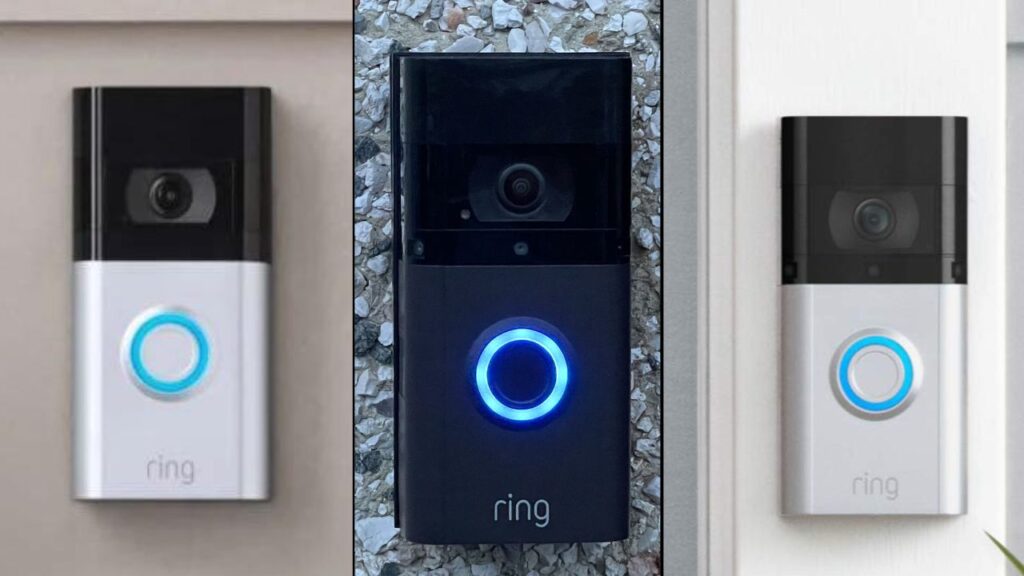
- Compatibility: These models can be connected to your home using 8-24 volt A/C doorbell wires.
- Battery Backup: Each model includes a lithium-ion battery, allowing them to function independently of the wiring if needed. They can also be charged via your existing transformer or an A/C adapter plugged into a wall outlet.
- Purchase Options: A/C adapters are readily available online for those who need them.
Ring Doorbell Pro:
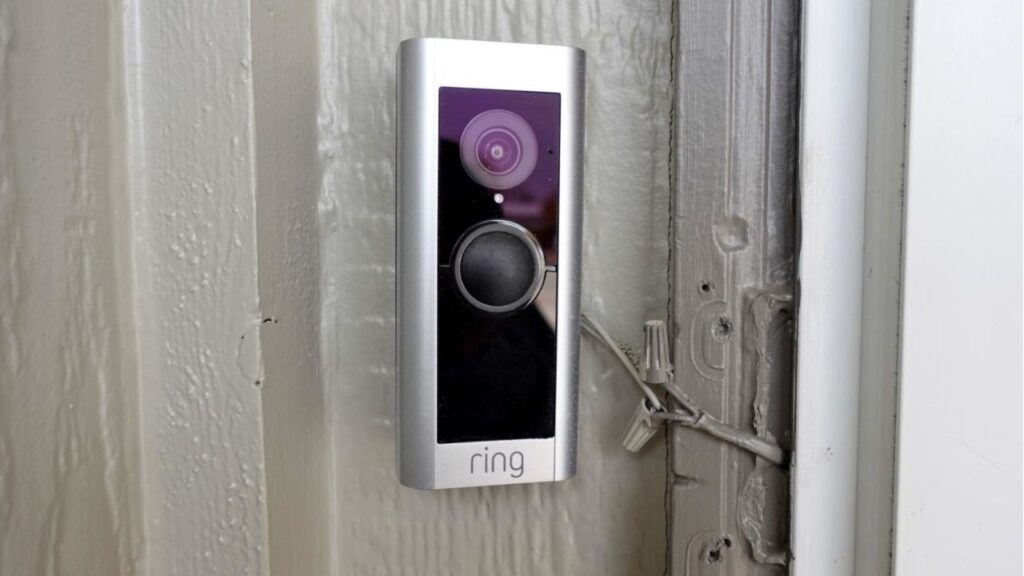
- Hardwiring Requirements: Designed to be hardwired using 16-24 volt A/C doorbell wires directly to your home’s transformer.
- Installation Considerations: You may need an electrician if you’re not experienced with electrical systems. Alternatively, an A/C adapter can be used if there’s an outdoor power outlet near your front door.
- Simplified Installation: The power adapter simplifies installation by bypassing the need to connect to the doorbell’s wiring. The Ring Pro Power Kit includes components to ensure your existing doorbell chime functions with the new setup.
- Installation Support: You can opt for professional installation services or follow DIY video guides available in the Ring app, which provide detailed on-screen prompts.
Ring Doorbell Elite:
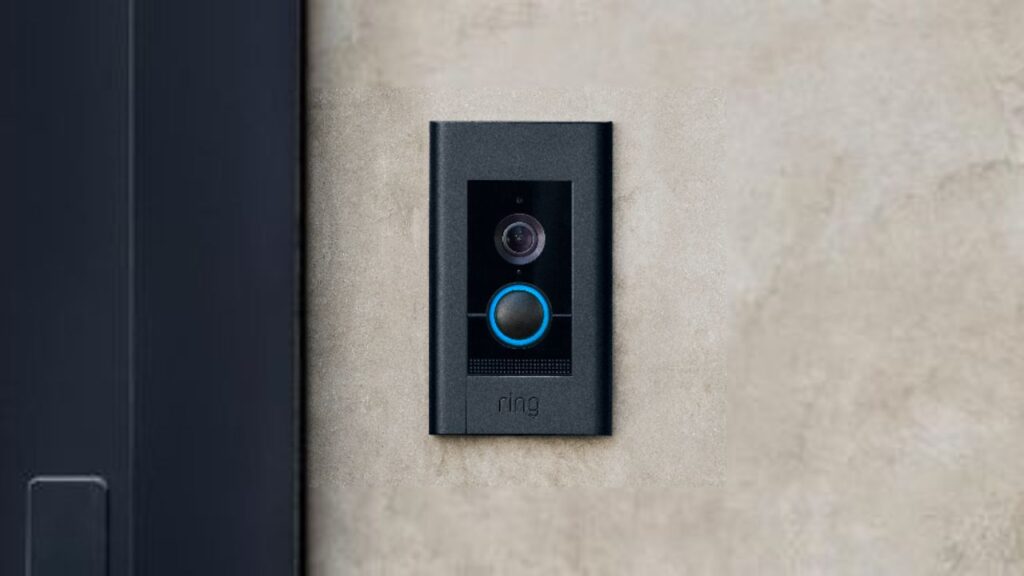
- Unique Features: The Ring Doorbell Elite is hardwired using an Ethernet cable, which connects to your Internet router for both power and data transmission.
- No Traditional Battery: This model does not require a traditional battery, unlike those that use an A/C adapter.
- Power Supply Needs: You might need the Elite Power Kit or Pro Power Kit to ensure a stable power supply from a wall outlet.
- Installation Essentials: The kit typically includes a 50-foot Ethernet cable, offering flexibility in placement. Detailed video instructions make the installation process manageable, even for beginners.
By choosing the right Ring doorbell model for your needs, you can ensure seamless integration with your home’s electrical system and enjoy enhanced security and convenience.
More Things People Look For:
Will a Hardwired Ring Work Without a Battery?
A hardwired Ring Video Doorbell 2 utilizes your existing doorbell wiring to stay charged during regular use. However, it still contains a battery that may need periodic recharging.
How Long Does a Ring Battery Last When Hardwired?
When a Ring Doorbell is hardwired and fully charged, its battery life can be significantly extended. Officially, these batteries are rated to last between six to twelve months before needing a recharge.
Newer models often have improved battery life, with some lasting up to ten months on a single charge, depending on usage and settings.
Can a Wired Ring Doorbell Use a Battery?
Yes, a battery-powered Ring Video Doorbell can be hardwired. In this setup, the wired connection provides power for operations, while the battery receives a trickle charge. This allows the doorbell to operate solely on the battery if the wired power is insufficient.
Does Ring Doorbell 3 Need a Battery if Hardwired?
Hardwiring the Ring Doorbell 3, which is inherently battery-powered, can reduce battery drain caused by frequent motion events and live views, particularly in areas with poor Wi-Fi signals. Following the Hardwiring Checklist can help ensure optimal performance and battery longevity.
What Happens if the Hardwired Ring Goes Offline?
If a hardwired Ring doorbell goes offline, it might be due to a loose or disconnected wire. For safety, always turn off the power before handling the wires to troubleshoot and resolve the issue.
Our Final Take
Even when hardwired, Ring doorbells need a battery to power features like motion detection and live view.
The battery is continuously charged by the home’s electrical system, ensuring reliable operation. Proper installation and maintenance are key for optimal performance.

